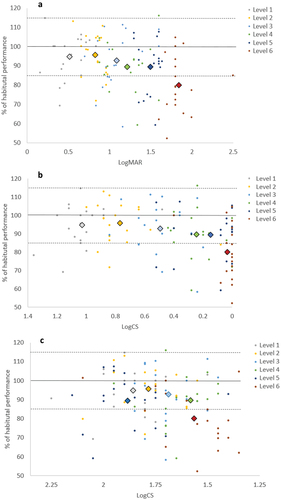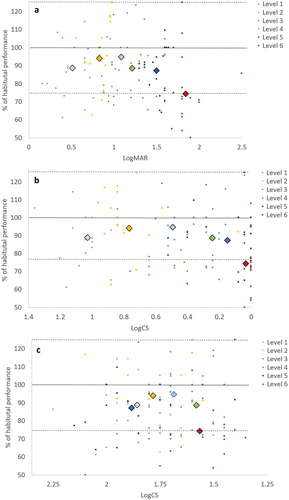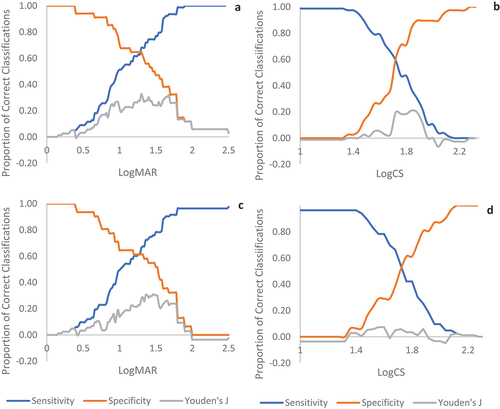Figures & data
Table 1. Current classes based on visual acuity and visual field; LogMAR 1.0 represents the current MIC (World Health Organisation, Citation2004.).
Table 2. Mean ± SD (min – max) for each level of simulated impairment in this study.
Figure 1. Schematic showing the set-up and execution of the vision impaired football skills test (Runswick et al., Citation2022).

Figure 2. The level of impairment experienced across each simulation (levels 1–6, control and clear) for visual acuity (LogMAR) and contrast sensitivity (LogCS). Plots show either MARS chart (a) or app (b) used to measure contrast sensitivity.

Figure 3. Mean (diamond) and individual (small circle) percentages of habitual technical performance at each level of impairment (1–6) for visual acuity (a), contrast sensitivity measured using a MARS chart (b) and contrast sensitivity measured using the app (c). The solid lines show habitual performance, the dotted lines show the boundaries of expected performance.

Figure 4. Mean (diamond) and individual (small circle) percentages of habitual anticipation performance at each level of impairment (1–6) for visual acuity (a), contrast sensitivity measured using a MARS chart (b) and contrast sensitivity measured using the app (c). The solid lines show habitual performance, the dotted lines show the boundaries of expected performance.

Figure 5. The sensitivity and specificity for different possible MICs for visual acuity for technical (a) and anticipation performance (c) and contrast sensitivity for technical (b) and anticipation performance (d).

Figure 6. Unconstrained decision tree model for technical performance (a) the full decision tree prior to pruning. (b) the pruned decision tree. In this case, the optimum number of nodes was equal to the original five.

Figure 7. Unconstrained decision tree model for anticipation performance. (a) the full decision tree prior to pruning. (b) the pruned decision tree.

Supplemental Material
Download MS Word (3.2 MB)Supplemental Material
Download MS Word (3.2 MB)Data availability statement
Data associated with this submission is available at: https://osf.io/7udzq/?view_only=72cd96a4b30f4f05b02b9d2f89f2053f
